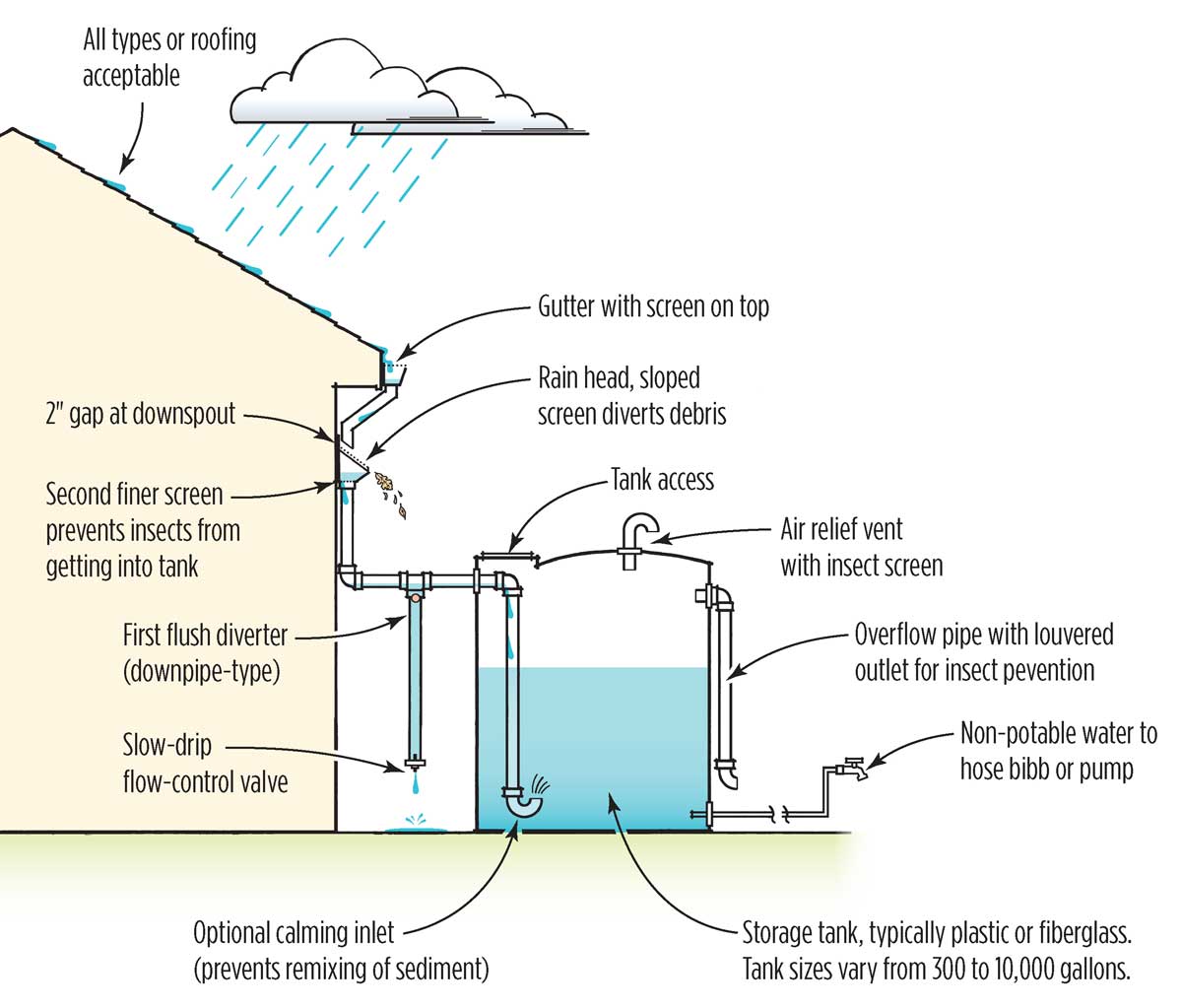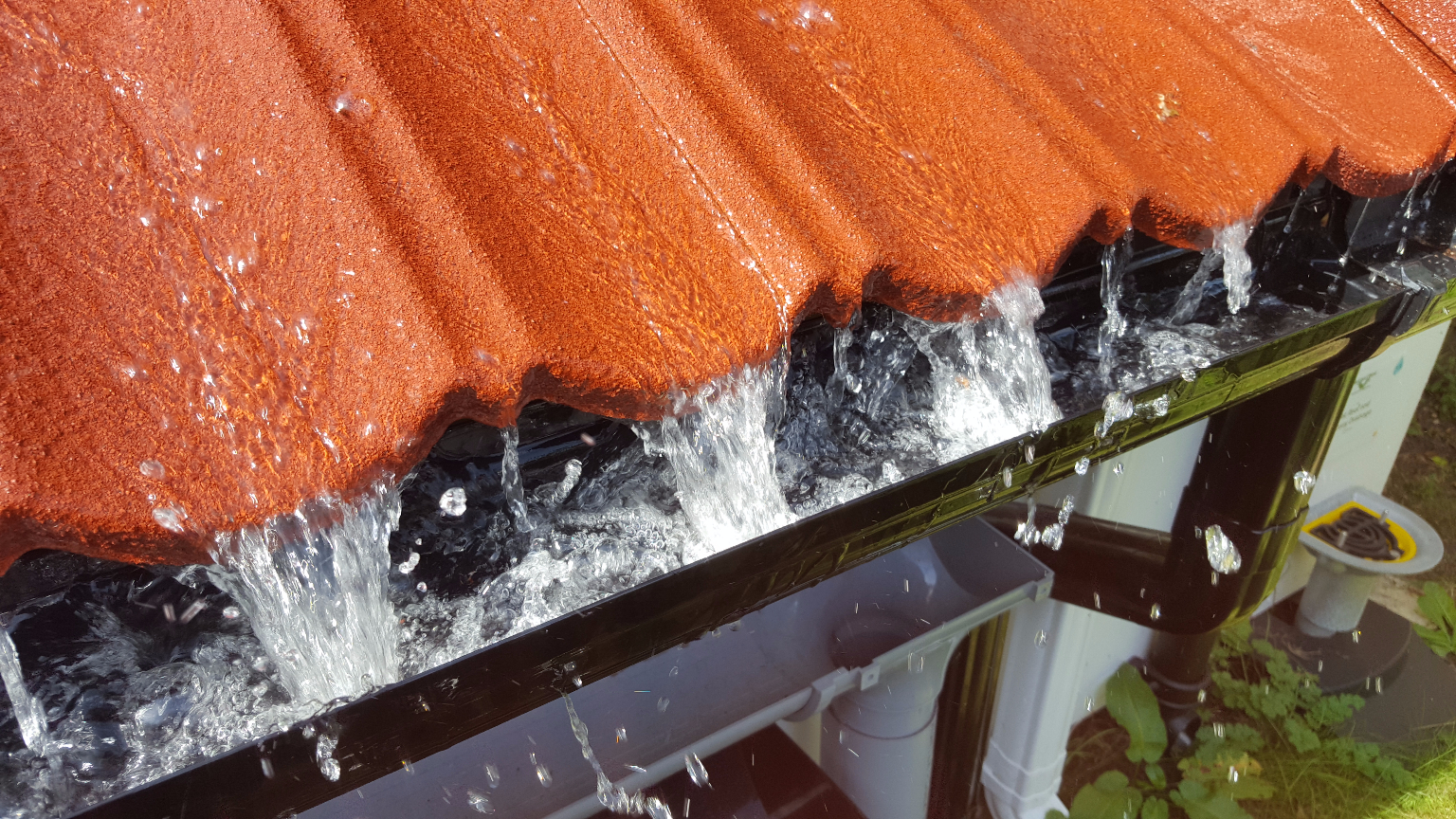
4 Easy Steps to Creating Your Own DIY Green Roof Rainwater harvesting, Green roof system
How it's calculated: {Roof Area in square feet} x {inches of rainfall for your location} x 0.62 = Amount Collected. The equation is made up of 3 numbers: The size of your catchment area. Most likely your roof. The average inches of rainfall for where you live. The average amount of water you can collect from 1 inch of rain per square foot of.

Rain Water Collector Rainwater Collection A Complete Guide To Collecting Rainwater
You should also ensure all your gutters, pipes and fittings are similarly suited to potable rainwater harvesting, and check any local Council or Government requirements. It's generally agreed that the most suitable roof materials for harvesting potable water are: COLORBOND® and ZINCALUME® steel (and similar aluminium, copper, galvanised.

Inverted Roofs BowlShaped Rain Collectors Naturally Cool Desert Homes Urbanist
To maximise rainwater collection, roof gutters must be installed to the Building Code and Australian Standard AS3500 - the Plumbing and Drainage standard. All roof guttering systems should meet these standards as a part of the building design. A design based on Australian Standard AS3500 will ensure that your roof gutters flow towards your.

A Rain Water Collection System is a perfect way to help your garden through those tough summer
Rainwater harvesting is the process of collecting water runoff so it can be stored for things like watering plants, cleaning, washing cars, and washing clothes. Your roof provides an effective surface for rainwater collecting.

Elements of a rooftop rainwater harvesting system. Download Scientific Diagram
Rainwater collected from a well-designed, well-maintained system can be suitable for all domestic uses. The more uses, the greater the savings in mains water.

Rainwater Collection Systems 101 & FAQs Homestead and Chill
The idea is that if someone collects rainwater, they reduce the amount that would naturally flow into rivers or underground reserves. This could affect other people or wildlife that rely on these water sources. So, while it might seem strange, these laws are meant to protect everyone's access to water.

Bowlshaped roofs harvest rainwater and promote natural cooling in arid environments
Roughly speaking, 1 millimetre of rain over 1 square metre of roof equals 1 litre of water. This capacity can be calculated using the following formula: Annual rainfall (in millimetres) x Roof surface area (in square metres) = Roof catchment capacity .

Water Tanks Aqualine Water Tanks Rainwater Collection Tanks Texas
Rainwater harvesting is collecting the run-off from a structure or other impervious surface in order to store it for later use. Traditionally, this involves harvesting the rain from a roof. The rain will collect in gutters that channel the water into downspouts and then into some sort of storage vessel.

The Best Roof Types for Rainwater Collection
Rainwater Collection Calculation Formulas and Equations Roof Area (ft2) X Precipitation Amount (in) X 0.623 = Amount Collected (gallons) Easy Formula to Remember: 1″ of Rain on 1,000 sf Roof will Yield 623 Gallons Roof Area (m2) X Precipitation Amount (mm) = Amount Collected (liters) Wondering how much rainwater you could collect off your roof?

Green Roof water harvesting Green roof, Rainwater harvesting, Green roof system
There are basically two techniques for rainwater collection: surface runoff and groundwater recharge. Both techniques include some or all of these parts: Catchment surface: the surface where rainwater collects Gutters and downspouts: conduits for channeling water Diverters and roof washers: remove dust and debris
:max_bytes(150000):strip_icc()/rainwater-harvesting-system-isometric-diagram-1201105579-34cb7b27492f42c387b89fd903a16ba4.jpg)
Rainwater Harvesting A Beginner’s Guide
Use our water catchment and water usage calculators below to make your selection easier! WATER CATCHMENT CALCULATOR. WATER USAGE CALCULATOR. SUMMARY. LITRES PER DAY. LITRES PER YEAR. RAIN HARVESTED. TANK SIZE. Roof Area (Sqr.

Rainwater Collection System for 2x3 Downspout Rainwater Etsy
The Best Roof Types for Rainwater Collection Stories Products Are you considering collecting rainwater, but not sure it will work with your roof or be safe? Check out our guide for answers to these questions and more.

Rainwater Harvesting with Gerard® Stone coated roof tiles
Rather than depending solely on a region's public water supply, incorporating rainwater harvesting and collection systems can provide a supplemental source of water for drinking (the quality is often better than surface water), cleaning, irrigation and bathing.

Rainwater and Solar Power Harvesting System Architizer
Standing Seam Metal If you're installing a new roof for the purpose of collecting rainwater, standing seam metal may very well be your best choice. A high quality enameled roofing material that is easy to clean, standing seam metal offers the highest collection efficiency available.

metalroofandrainwaterharvestsystem Rain water collection, Rain water tank, Rain water
Rainwater harvesting is the practice of collecting and storing rain for reuse, rather than letting the water run off and be absorbed into the ground or channeled into drains, streams, or.

Single Phase Rooftop Rainwater Harvesting System, Automatic Grade Automatic, Rs 50000 /unit
An average suburban roof of 200m 2 with such a rain fall can potentially harvest 100,000L of rainwater (200m 2 * 500mm = 100,000L). Keep in mind most rain falls over 2-3 months of a year. It isn't uncommon for an area to collect up to 350mm+ of rain in just one month, even in rural areas. When it is dry it can be dry, but when it.